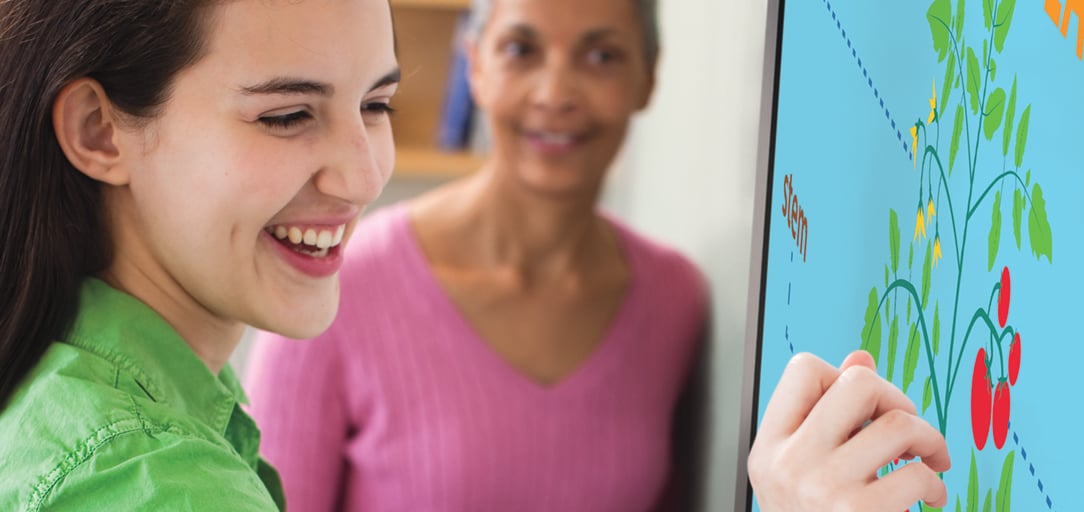
Teachers who are blessed with an assortment of technology in their classroom probably use it often—we are more likely to use something if it is readily available to us. But like any new tool, as we start to gain expertise and comfort with it, we use it more and more. And as we settle into a pattern of use with the technology, we probably feel as though it would be hard to live without.
But even if this is the case and usage is very high, teachers may find themselves in a groove, maybe even a rut, when it comes to how they use technology in their classroom. We limit ourselves to using the tool in ways that we already know and think less about the ways that we could be using it.
Working Smarter, Not Harder
As the school year starts to move into full swing, it’s a great time to think about other ways that we can use the tools we have—maybe even to work smarter and not harder. Here are some of the different ways that teachers use technology in the classroom. This includes both small details and big picture items that teachers can think about expanding upon, maybe even to find a new way to use an old tool.
If you have a front-of-the-room display
Whether it’s a projector or an interactive flat panel, here are some uses that you might not have thought about before:
- Playing games: There are great learning games that can be found all over, but to branch out even more, think about movement games. Boards that are interactive can have a movement component to them, so a relay race to answer questions on the board can be engaging, interactive, and an opportunity for learning.
- Keeping organized: Many teachers use their flat panel display to take attendance and lunch count at the start of the day, but it can be used for so much more. Any kind of checking in or exit ticket can collect information quickly and store it so the teacher doesn’t have to mess with it. Think of things like turning in homework or permission slips.
- Engagement, engagement, engagement: One of the amazing wonders of our time is the ability to see a photo of virtually anything in the world, including under the sea or in the sky. The amazingly clear display that the newest interactive flat panels feature really catches the eye. Kids will deepen their understanding of all things science and history when we bring them to life on our display panels.
If you have a student response system
Think wider and broader about how you can use this technology more in the classroom:
- Pre-assessment, adaptive leveling: We usually think about quizzing students when we have taught them something, but what if we used the student response system to pre-assess their understanding? Finding out where each student stands in terms of their learning toward a goal is easy and efficient with a number of different apps. Gone are the days of teachers wondering what was covered the year before and what kids have retained.
- Formative assessment, instructional engagement: By getting feedback quickly on the fly in an organized manner, teachers can increase their impact. If you have a student response system in your classroom, have it plugged in all the time. Embed questions into the presentations that make it seamless and easy to adjust the lesson as needed.
If you have one-to-one devices
You probably don’t have trouble using these all the time in the classroom, but you should be maximizing their potential:
- Connection: One of the major issues with increasing technology use is decreasing the interaction that students have between one another. But technology can connect instead of isolate—we just have to use it in the right way.
- Collaboration: Some early research on the effectiveness of devices in the classroom showed that a ratio of 1:2 was more effective than 1:1. As teachers, this makes some intuitive sense to us. We know that if a student is struggling with a concept, they will only continue to struggle if they do it on their own. We also know that for some students, the content learning isn’t the challenge—it’s the use of the device that is hard for them. Consider doing collaborative projects that require two heads around one screen. The outcomes might surprise you.
Making some of these changes takes time and thought, so I would encourage you to pick one tool and see what you can come up with. You might be surprised and challenge yourself to consider what else can you think of that could be a new, creative, and time-saving way to use the technology in your classroom.
Want to connect with fellow educators to discuss teaching tips, share lesson plans, and ask questions about classroom tech? Consider joining MimioConnect™, our online educator community.



